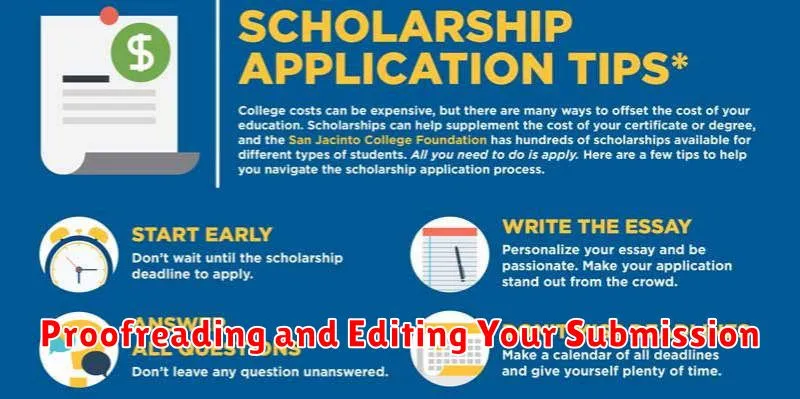Applying for scholarships as an international student can be a daunting process, but it’s often a crucial step towards pursuing higher education abroad. Securing financial aid can significantly reduce the financial burden and open doors to a world of academic opportunities. This article provides valuable scholarship application tips specifically designed for international students, guiding you through each stage of the application process, from identifying suitable scholarships to crafting compelling applications and ultimately increasing your chances of success. Understanding the nuances of scholarship applications for international students is essential for maximizing your potential to receive funding.
Navigating the complexities of international student scholarships requires careful planning and execution. This guide covers key aspects such as eligibility criteria, application requirements, and effective strategies for presenting yourself as a strong candidate. We will explore how to research and identify scholarships that align with your academic profile, how to write a persuasive personal statement, and how to gather strong letters of recommendation. By implementing these scholarship application tips, international students can gain a competitive edge and increase their likelihood of securing the financial support they need to achieve their academic aspirations.
Where to Find International Scholarships
Locating international scholarships requires a proactive approach. Begin by researching opportunities offered by your target universities. Many institutions provide scholarships specifically for international students.
Explore scholarship databases and search engines. These resources often categorize awards by field of study, country of origin, and level of study. Government-funded scholarships are another avenue to explore, offered by both your home country and the country where you intend to study.
Consult with your educational advisors or teachers. They may have valuable insights into less publicized scholarship opportunities.
Eligibility and Required Documents
Meeting eligibility requirements and submitting all necessary documents is crucial for a successful scholarship application. Carefully review specific scholarship guidelines, as criteria vary.
Common eligibility factors include:
- Academic merit: A strong GPA and academic record.
- Country of origin: Some scholarships are region-specific.
- Field of study: Scholarships may target specific disciplines.
- Language proficiency: Proof of English language skills (TOEFL, IELTS).
Typical required documents include:
- Transcripts: Official academic records.
- Recommendation letters: From professors or mentors.
- Statement of Purpose: Outlining your academic and career goals.
- Passport/Visa: Proof of identification and legal status.
Writing a Compelling Essay
Your essay is a crucial part of your scholarship application. It’s your opportunity to showcase your unique qualities, experiences, and aspirations to the selection committee. A compelling essay should directly address the scholarship prompt, highlighting how you align with the organization’s values and goals.
Clearly articulate your academic and personal achievements, demonstrating how they’ve shaped you and prepared you for future success. Focus on your strengths and provide specific examples to support your claims. Maintain a concise and focused narrative, ensuring your essay remains within the specified word limit.
Proofreading and Editing Your Submission

Thoroughly review your scholarship application before submitting. Check for any grammatical errors, typos, or inconsistencies.
Ensure your writing is clear, concise, and effectively communicates your qualifications and aspirations.
Consider asking a trusted friend, teacher, or mentor to proofread your materials for an objective perspective.
Meeting Deadlines and Requirements
Meeting deadlines is crucial. Late applications are rarely considered. Track all deadlines meticulously and aim to submit your materials well in advance.
Adhering to all requirements is equally important. Carefully review the scholarship guidelines for each application. This includes providing all requested documents, adhering to word limits, and following specified formatting instructions.
Following Up with Scholarship Providers
Following up after submitting your scholarship application demonstrates your genuine interest and professionalism. However, it’s crucial to do so appropriately.
Check the scholarship provider’s guidelines for specific instructions regarding follow-up communication. If no instructions are provided, consider sending a polite email a few weeks after the application deadline to inquire about the status. Keep your email concise and reaffirm your strong interest in the scholarship opportunity.
Avoiding Common Scholarship Mistakes

Submitting a strong scholarship application requires diligent preparation and attention to detail. Avoid these common pitfalls to maximize your chances of success. Missing deadlines is a critical error. Track deadlines meticulously and submit your materials in advance. Failing to follow instructions is another frequent mistake. Carefully review all guidelines and adhere to specific formatting and content requirements.
Generic applications rarely succeed. Tailor your application to each scholarship, highlighting relevant experiences and aspirations. Neglecting proofreading can undermine your credibility. Thoroughly review your application for grammatical errors, typos, and inconsistencies.

